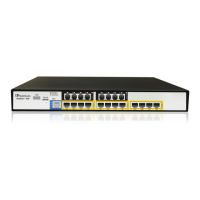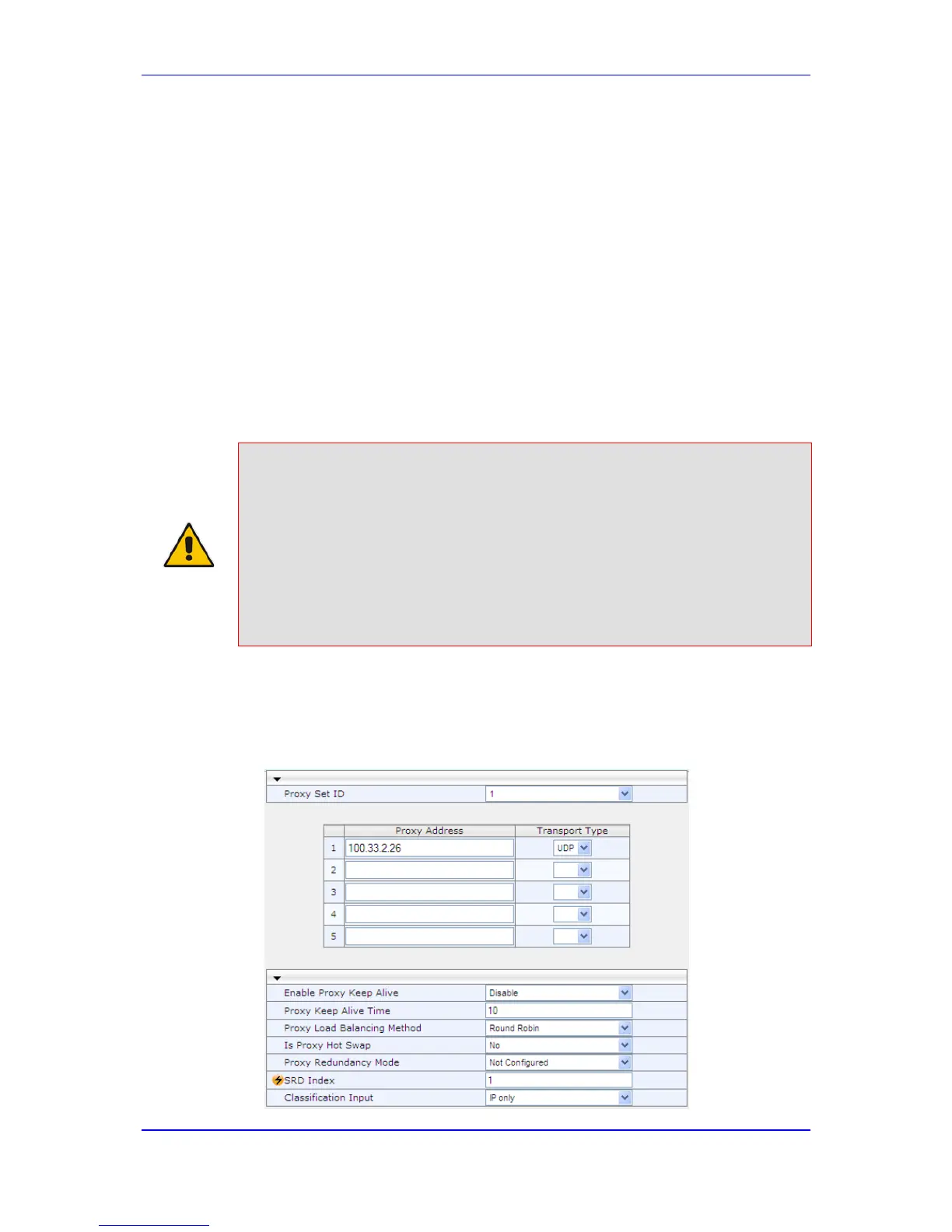19.4 Configuring Proxy Sets Table
The Proxy Sets Table page allows you to define Proxy Sets. A Proxy Set is a group of
Proxy servers defined by IP address or fully qualified domain name (FQDN). You can
define up to 32 Proxy Sets, each with up to five Proxy server addresses. For each Proxy
server address you can define the transport type (i.e., UDP, TCP, or TLS). In addition,
Proxy load balancing and redundancy mechanisms can be applied per Proxy Set if it
contains more than one Proxy address.
Proxy Sets can later be assigned to Server-type IP Groups (see 'Configuring IP Groups' on
page 210). When the device sends an INVITE message to an IP Group, it is sent to the IP
address or domain name defined for the Proxy Set that is associated with the IP Group. In
other words, the Proxy Set represents the destination of the call. Typically, for IP-to-IP call
routing, at least two Proxy Sets are defined for call destination – one for each leg (IP
Group) of the call (i.e., both directions). For example, one Proxy Set for the Internet
Telephony Service provider (ITSP) interfacing with one 'leg' of the device and another
Proxy Set for the second SIP entity (e.g., ITSP) interfacing with the other 'leg' of the device.
Notes:
• Proxy Sets can be assigned only to Server-type IP Groups.
• To enable classification of IP Groups according to Proxy Set ID, in the IP
Group table, set the 'Classify By Proxy Set' parameter to Enable.
• The Proxy Set table can also be configured using two complementary
tables:
- Proxy Set ID with IP addresses: Table ini file parameter, ProxyIP or
CLI command, configure voip > control-network proxy-ip > proxy-set-id.
- Attributes for the Proxy Set: Table ini file parameter, ProxySet or CLI
command, configure voip > control-network proxy-set.
To configure Proxy Sets:
1. Open the Proxy Sets Table page (Configuration tab > VoIP menu > Control
Network submenu > Proxy Sets Table).
Figure 19-3: Proxy Sets Table Page

